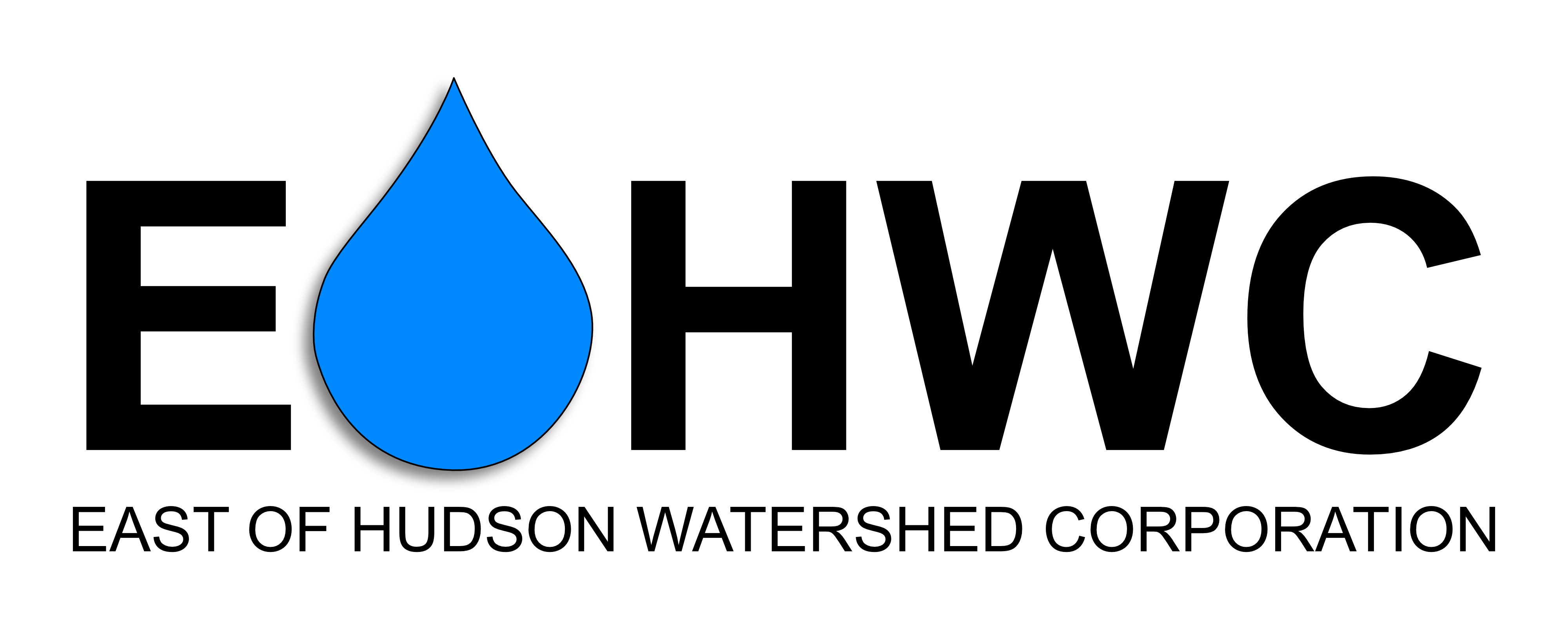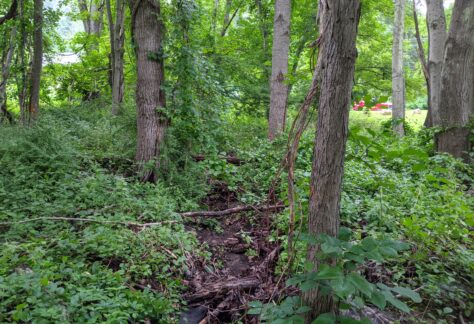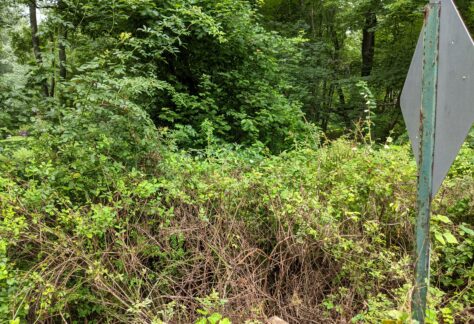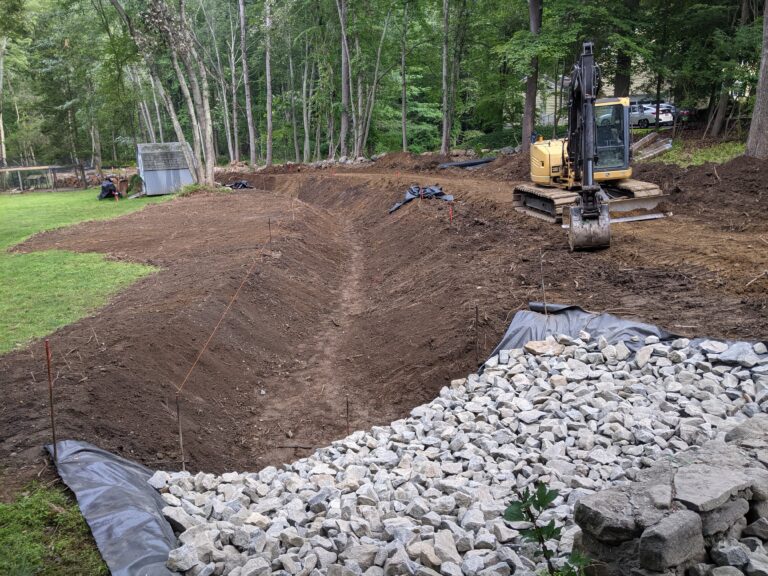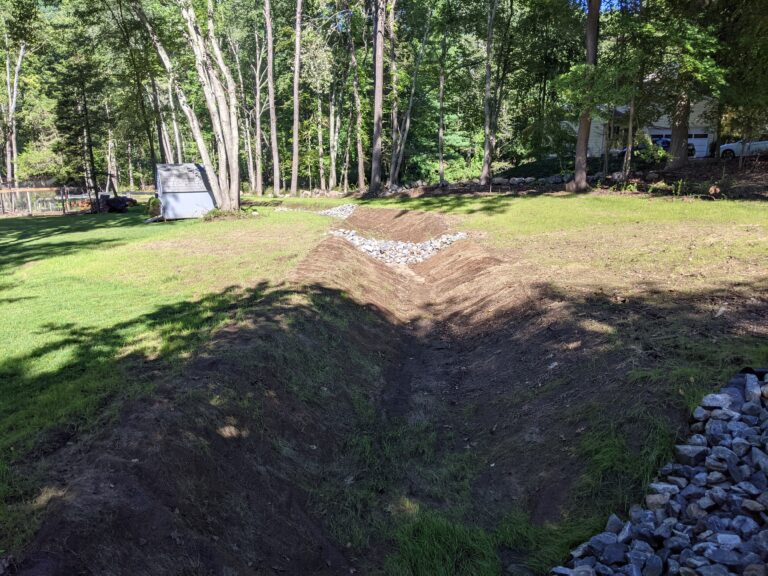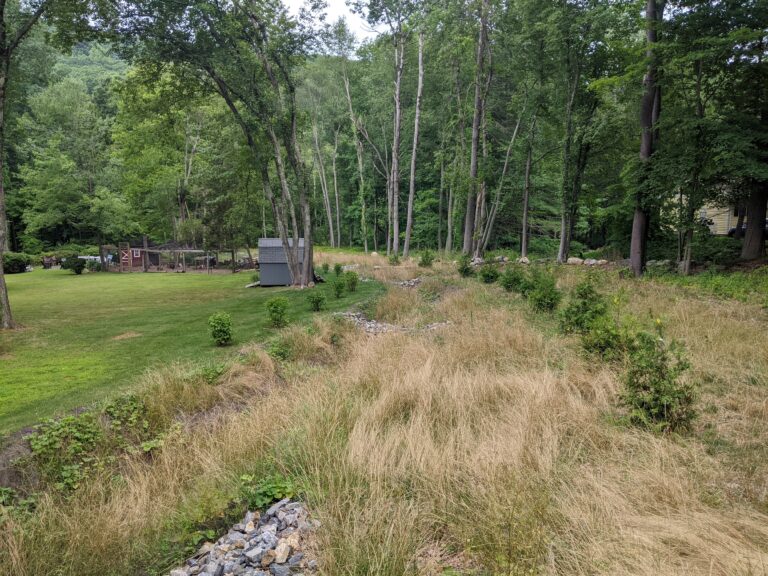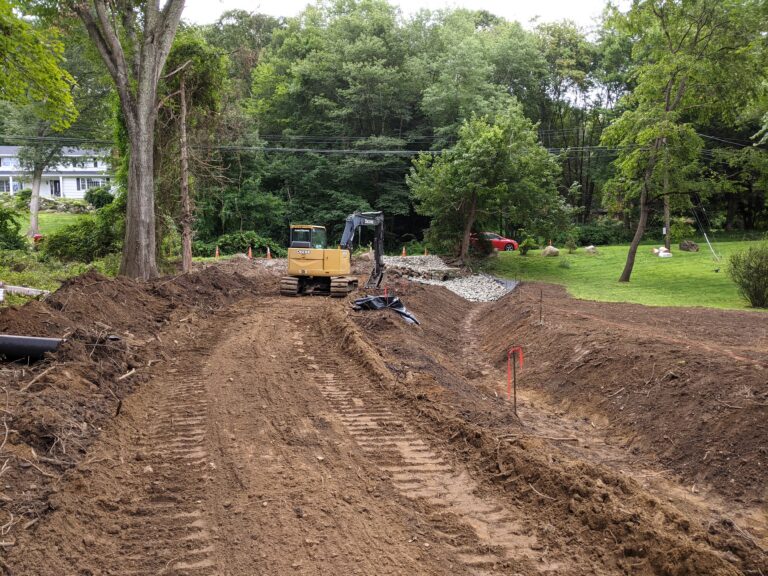Fixing Drainage Channels and Clearing out Invasives!
In April of 2021, we started the construction of a drainage channel stabilization project in Pound Ridge. Pittingaro and Doestch designed the project and Coyle Construction was tasked with the installation of PR-CR-701. This was a location of concern because the drainage channel collected over 60 acres of residential property which generates a large amount of stormwater. During high-intensity rainstorms, the fast-moving water would erode the banks of the channel, causing soil to get washed into the nearby wetland.
How Does Channel Stabilization Remove Phosphorus?
Soil erosion was the primary stormwater issue here. One might think, “What does erosion have to do with Phosphorus removal?”. Given that our project goal is always to remove Phosphorus, where was the Phosphorus coming from in this fairly well forested neighborhood?
Soil contains a surprising amount of Phosphorus, but in an undisturbed area, this is typically not a concern. Soil in a forest, for example, pulls Phosphorus out of stormwater and keeps it in an inert state, meaning it cannot affect plants, algae and other organisms. However, erosion from fast moving water can pull the Phosphorus-rich soil out of the ground, and transport it to sensitive locations, such as nearby streams, ponds and wetlands. Once there, algae in the water can use the Phosphorus to grow quickly, leading to algal blooms.
At this site, approximately 771 cubic feet of soil eroded from the existing drainage channel annually, which is about 73,000 pounds of soil. Surprisingly, this huge amount of soil contains only 21.9 pounds of Phosphorus. However, preventing this small amount of Phosphorus from entering into the waterway prevents the growth of approximately 10,960 pounds of algal growth each year. Keeping the soil in place will also prevent sediment transport into the nearby wetlands, which clogs up the water and can cause plants to become buried, killing them by preventing photosynthesis.
In this pre-construction photo, you can see the pipe which collects water from the Parkview Road neighborhood. This pipe releases water into our drainage channel of concern and you can see the large amount of deposition and erosion happening right here.
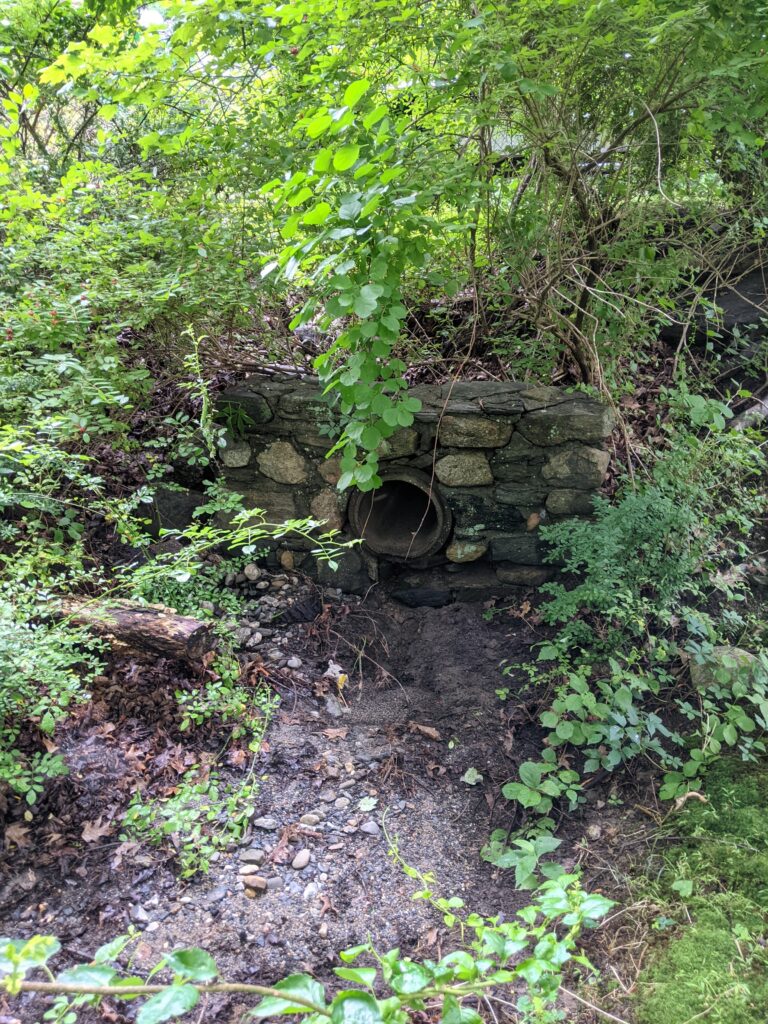
Below is a gallery of pre-construction photos. You can see the amount of overgrown invasive plants along with wide-spread soil erosion.
Restabilizing the Stream and Introducing a Pollinator Habitat
First, our contractor removed all the invasive or overgrown plants along the drainage channel. They then straightened the channel and reinforced the banks and streambed with a grassy matting, which helps keep the soil in place. We installed check dams, which are the rocky mounds, to help slow down the water that enters the channel and reduce the erosive force. We chose to install a large riprap apron at the pipe outfall near the road, and at the end of the channel. Doing such helps cut down the storm flow velocity even more. After the channel stabilization was sorted out, we were left with an open area, clear of invasives. The property owner proposed a great idea to plant wildflower seed throughout the open area. Pollinators are facing a rapid population decline due to reduced habitat. Using this project area as both a stormwater retrofit and an opportunity to introduce new pollinator habitat greatly helps the local environment.
Although the first growing season in 2022 was extremely hot and dry, we are hoping and expecting in the future that this area will become a wildflower meadow for small birds and insects to collect food and pollen.
The following are photos from throughout the construction process. They are of the same viewpoint, with the top row being the before and after view facing the wetland from the road, and the bottom row facing the road from the lower wetland
The following is a video showing the full channel before and after construction.
Overall, this project was a great success and led to the removal of Phosphorus and thousands of pounds of soil annually from the downstream wetland. It will continue to help to prevent algae growth, while promoting water quality health within the nearby waterways. By removing this pollution from the wetland, flora and fauna within it will be able to thrive. Removing the invasives along the channel also opened up the opportunity for a meadow to flourish.
